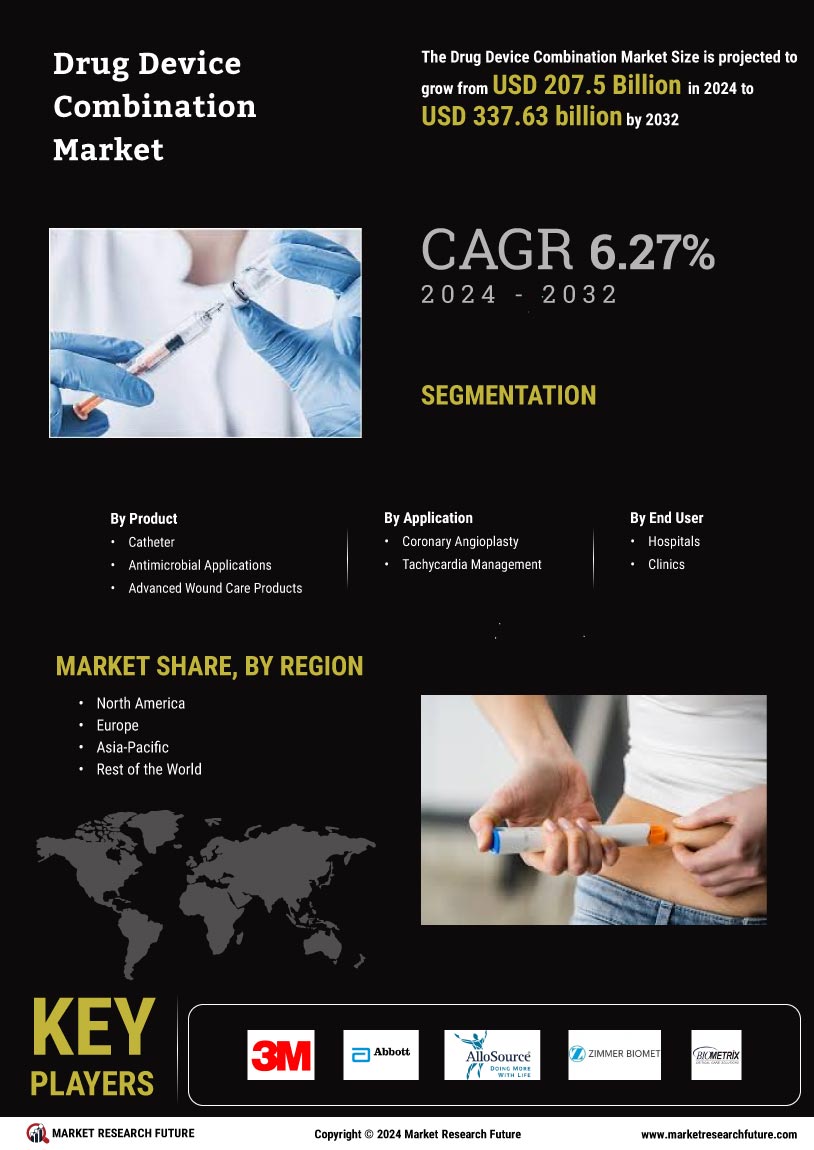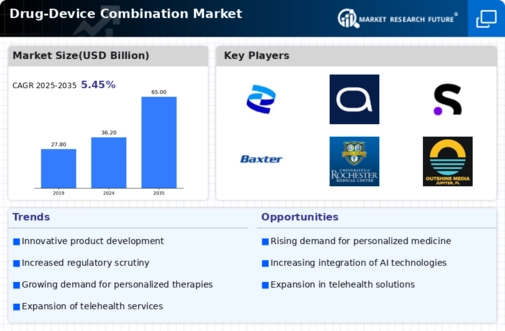Market Trends and Projections
Growing Focus on Preventive Healthcare
The Global Drug-Device Combination Market Industry is witnessing a shift towards preventive healthcare, driven by a growing awareness of health management. This trend emphasizes the importance of early detection and intervention, leading to the development of drug-device combinations that facilitate preventive measures. For instance, wearable devices that monitor health parameters and deliver medications as needed are becoming increasingly popular. This focus on prevention is expected to contribute to market growth, as healthcare systems prioritize cost-effective solutions that enhance patient outcomes and reduce long-term healthcare costs.
Rising Demand for Personalized Medicine
The Global Drug-Device Combination Market Industry experiences a notable surge in demand for personalized medicine. This trend is driven by advancements in biotechnology and genomics, which enable tailored therapies that cater to individual patient needs. As healthcare shifts towards more customized treatment plans, drug-device combinations that integrate diagnostic and therapeutic functions are increasingly favored. For instance, devices that deliver drugs based on real-time patient data exemplify this shift. The market is projected to reach 36.2 USD Billion in 2024, reflecting the growing emphasis on personalized healthcare solutions.
Increasing Prevalence of Chronic Diseases
The Global Drug-Device Combination Market Industry is significantly influenced by the rising prevalence of chronic diseases such as diabetes, cardiovascular disorders, and respiratory conditions. The growing patient population necessitates innovative treatment solutions that combine drugs with devices for effective management. For instance, insulin delivery systems that integrate continuous glucose monitoring are gaining traction among diabetic patients. This trend is expected to drive market growth, with a compound annual growth rate (CAGR) of 5.45% anticipated from 2025 to 2035, underscoring the urgent need for integrated healthcare solutions.
Regulatory Support for Combination Products
Regulatory bodies worldwide are increasingly supporting the development of drug-device combinations, thereby fostering growth in the Global Drug-Device Combination Market Industry. Streamlined approval processes and clear guidelines facilitate the entry of innovative products into the market. For example, the U.S. Food and Drug Administration has established a dedicated pathway for combination products, which encourages manufacturers to invest in research and development. This regulatory support is likely to enhance market dynamics, as companies are more inclined to develop novel solutions that meet regulatory standards and address patient needs.
Technological Advancements in Drug Delivery Systems
Technological innovations play a pivotal role in shaping the Global Drug-Device Combination Market Industry. Enhanced drug delivery systems, such as smart inhalers and implantable devices, are revolutionizing how medications are administered. These advancements not only improve patient compliance but also optimize therapeutic outcomes. For example, the integration of microchip technology in drug delivery devices allows for precise dosing and monitoring. As a result, the market is expected to grow significantly, with projections indicating a value of 65 USD Billion by 2035, highlighting the impact of technology on healthcare delivery.



















